
Beyond the kerb: where does your waste go?
Take a waste treatment tour with KESAB environmental solutions to see what happens once your rubbish leaves the kerb.
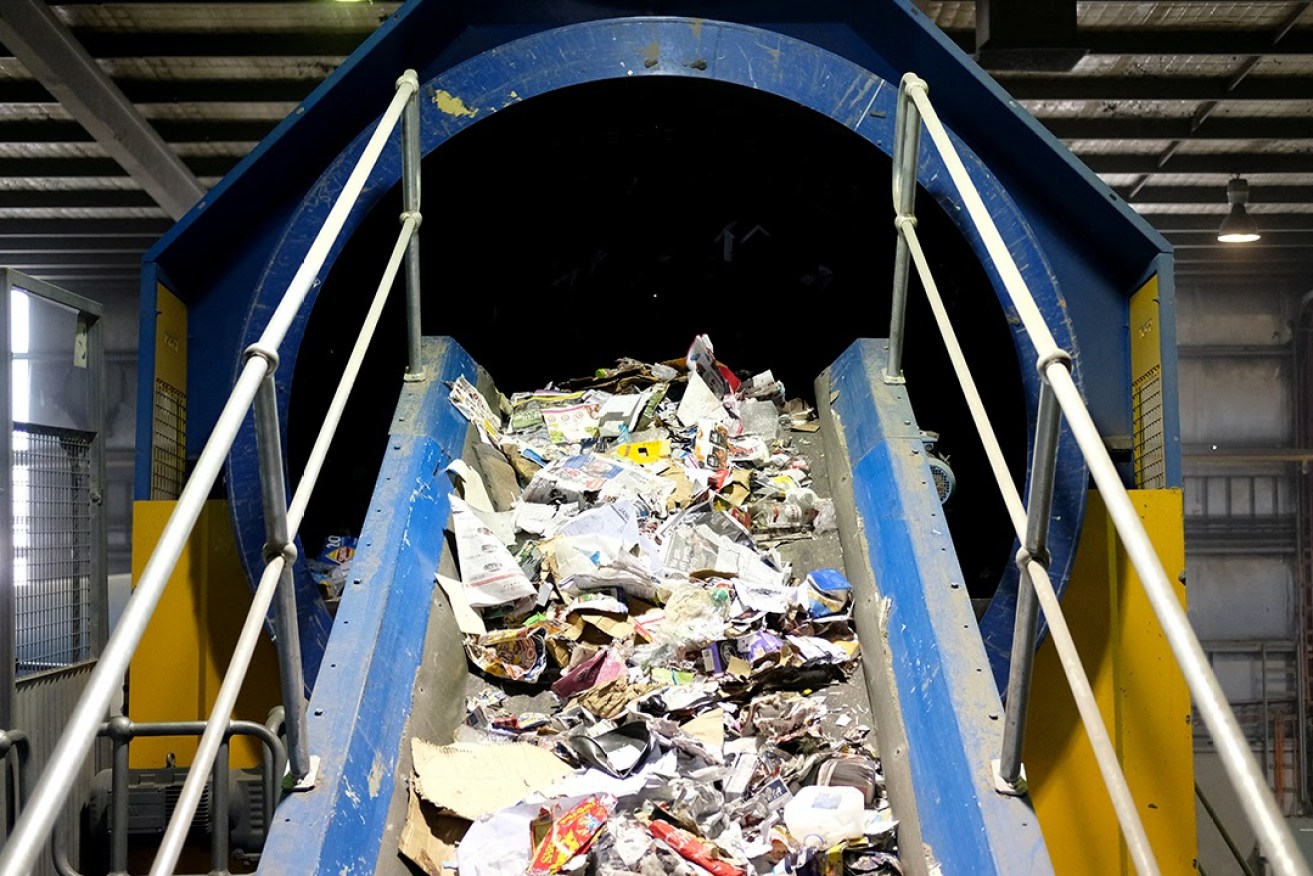
There has been a spark of interest in the world of waste, following a spate of recent coverage from Australia’s national broadcaster, but so much of what happens beyond the curb is still hidden from the general public.
This is, of course, by design: an efficient system of waste management is one that should go largely unnoticed – save for occasional moments of being caught behind a rubbish truck in a thin suburban backstreet.
The drawback of such a system is the distance created between people and the consequences of the waste they produce.
Councils and governments do implement educational campaigns, but still individuals have questions about how to recycle and what happens to the materials they put in their kerbside bins.
One organisation fielding requests for knowledge is KESAB environmental solutions, which offered this tour of Adelaide’s waste management facilities.
Wendy Sutton, a schools and community project officer with KESAB environmental solutions, welcomes the spotlight recently shone on society’s waste.
“The War on Waste and Four Corners have sparked a lot of interest in the waste area,” she says.
“In Adelaide there’s a lot of talk over coffee cups now, and what cafes are doing, and like all over Australia everyone’s gone to keep cups.
“They have focused on one thing, but it’s good because then that leads into other aspects of their lives, I think.”
It leads some, she says, to approach KESAB environmental solutions to experience a tour similar to what we’re about to embark on.
“Once the residents have gone on these tours, they just seem to feel a lot more comfortable about putting their recycling out, composting more, and we’ve got some fantastic initiatives in South Australia for composting,” Sutton says.
“I guess the gap is that people put it out on the kerb, and that’s it. They like to think it’s going somewhere great, or otherwise they don’t care, but just once you see it, I think it changes your habits and how you feel about it.”
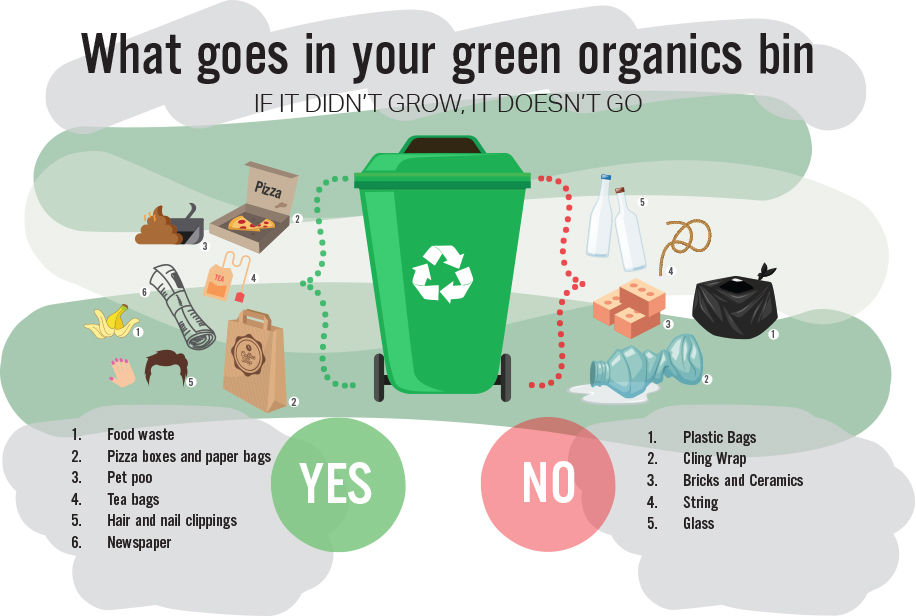
Cleanaway
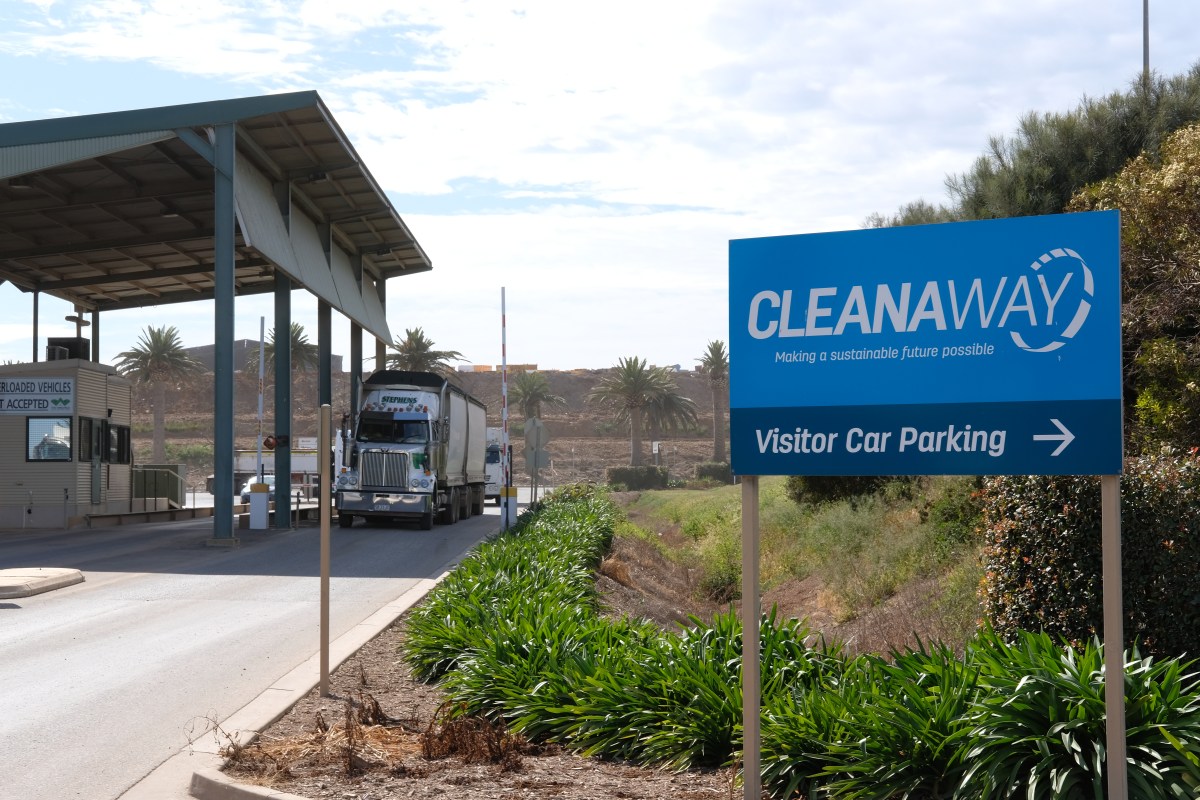
The first stop on our tour is Cleanaway, where we’re introduced to Ian McDowell, and operations manager at the company.
With windows secured tightly, the KESAB environmental solutions van pulls into an enormous shed where a mound of rubbish spanning the full length of the back wall is compacted, picked from and shifted around by three large pieces of machinery – a compactor, a dozer and an excavator.
McDowell points out that the pile should not be this size, but due to drivers being ill they have momentarily fallen behind.
The mounds we’re looking include the putrescible waste, or general domestic waste; hard waste, from council collections; and recyclables.
This facility in Wingfield receives 160 tonnes of material per week. Some of this will be recycled, some will be scrapped and sold, but much of it will be compacted, pushed into trailers and then sent to a landfill at Inkerman.
“We’re digging another [landfill] at the moment. We’ve only just opened one, so virtually we start one when another one is about a quarter full,” McDowell explains.
The technology implemented in the process is rudimentary at best. The excavator will pick out what can be scrapped or recycled, and the rest is squashed several times over, until it gets to 1000 kilograms per cubic metre.
Rather than a technological advancement, the innovation they’re waiting for is a social one – through education and behavioural change, the more people recycle, the less Cleanaway needs to squash, and the less that goes to landfill.
“We’ve got about 60 or 70 years left [at Inkerman]. That’s dependent on how well people recycle,” McDowell says.
“The less that goes to landfill, the longer lifespan. If we can compact it more, we use less space, it takes longer to break down. There’s a whole lot of catch-22 situations.”
As becomes increasingly apparent throughout our tour, waste management is a costly business, and when Cleanaway tendered for the job, it did so taking into account the hard waste that could be processed and sold on for a profit.
The humble ritual of scrappers hooking a trailer to the back of their ute and taking from heaps of abandoned furniture and whitegoods on a council-wide collection day, just before the official trucks come through, has affected the company’s bottom line.
“When people go and pilfer that, we don’t get any money from it, but we spend money getting rid of it and sorting it,” McDowell explains.
Some councils have opted for an on-request service rather than a set day, which McDowell says has helped them reclaim some of that lost revenue.
Once the rubbish mound is cleared, the excavator will pick up an old mattress and wipe the floor, ready for the next piece of the 160-tonne workload to come in.
Jeffries
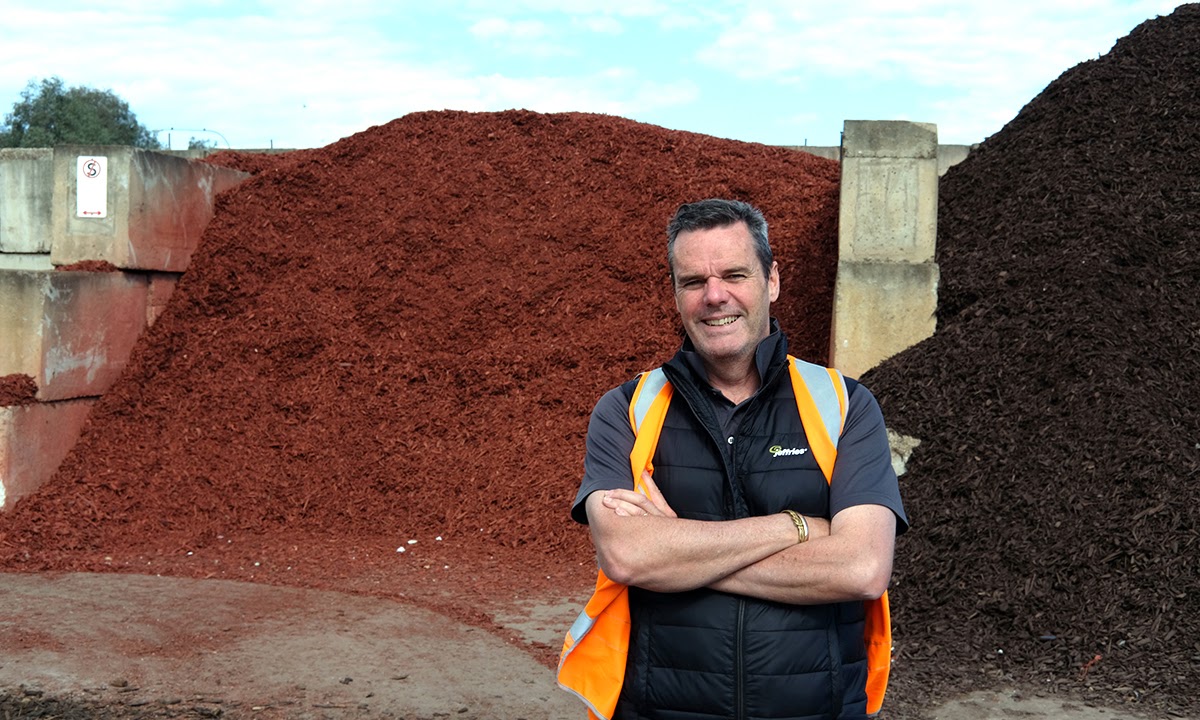
Jeffries group manager, Peter Owen
The next stop on our tour takes us little more than a few hundred metres up the road, to Jeffries Compost.
We switch out of the KESAB environmental solutions van and into a Jeffries ute, with Jeffries group manager, Peter Owen, behind the wheel. In the ute there is a far more lax policy when it comes to keeping the windows closed.
After introducing himself, Owen points out the palm trees that line the entrance to the Wingfield waste facility. It is Jeffries’ job to process the organic matter that comes to it, sometimes from roadworks sites where trees have been removed to make way for new or expanded roadways.
Each of the trees lining the entrance to the facility is an example of fate smiling upon the vegetation, where it has been replanted rather than being turned into compost.
We follow an East Waste truck into the area where the organic material is sorted into five streams.
“The first stream we have is clean timber,” Owen says.
“We can take the blue pallets because that’s a natural dye, we can handle that, but this comes in from industry. This comes in from stuff like General Motors and Mitsubishi and all kinds of industry around South Australia.
“So there’s no laminate, there’s no MDF, and there’s no chipboard, because those things have resin in, like glues. Because we’re organically certified, all we’re after is basically pine.”
The second stream comes from land clearing projects and commercial landscapers – where the palm trees might have ended up, if they weren’t so lucky.
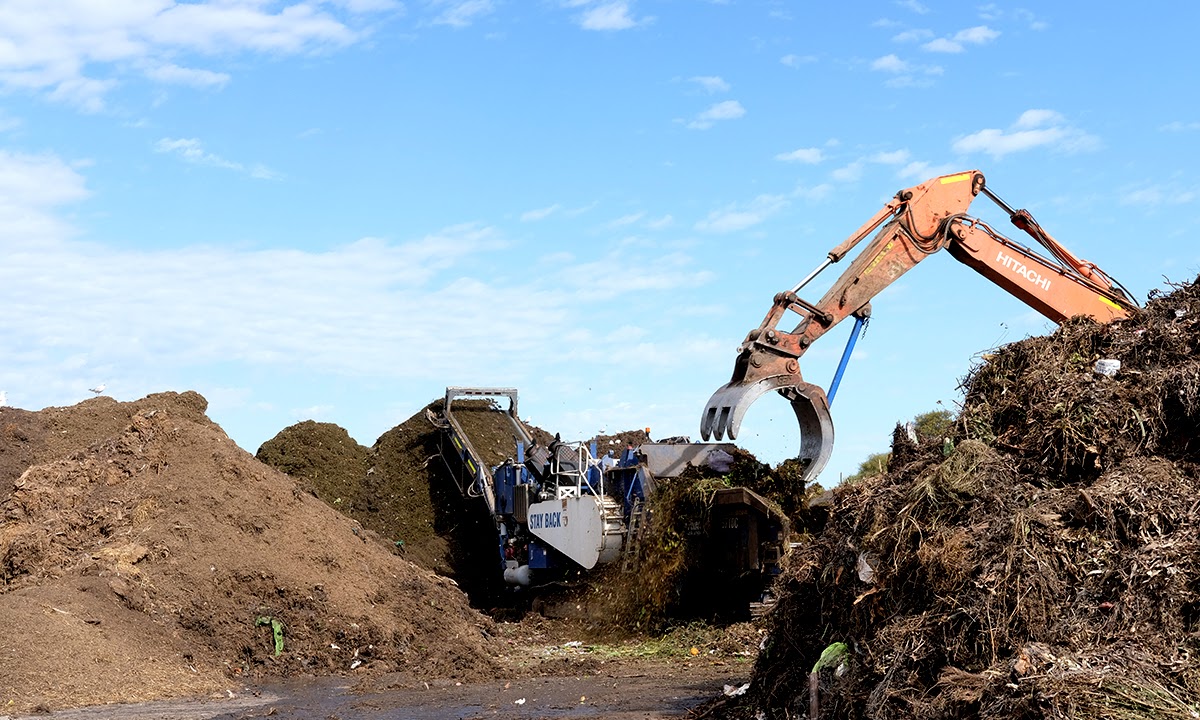
“This pile is usually pretty good in that there’s not much contamination in it because we’ve educated the people over time, and we know who’s bringing it in, so if we do get a contaminated load, we normally know who it is and we ring them up and nine times out of 10 it’s a mistake,” Owen says.
The East Waste truck in front of us pulls up to the third pile.
“He’s been collecting the bins this morning… [from] Norwood, Burnside, Walkerville, Campbelltown, Mitcham and Adelaide Hills,” Owen says.
“That goes into that pile with all of the birds on it at the end. That’s 60 per cent of what we do, is the kerbside material, and that’s the third stream.”
This pile contains most of the contaminants Jeffries deals with. Sometimes the result is an innocuous bin that’s fallen into the back of the truck without the driver noticing, sometimes it is a less innocuous car battery, and on one occasion it was a hugely damaging steel star dropper.
“In the grinder that sheared the belt, and it set the airbags off, and it cost us about $4,000-$5,000 to fix, but the worst thing is the grinder’s out for the best part of three days, and you can’t have spare ones of those sat around, they’re so expensive,” Owen says.
“If you look in the kerbside material, they’ll pull out batteries and air conditioning units and car tyres. That’s not a mistake, that’s just being downright mischievous, that is. So there’s always that element of people and hurdles to overcome.”
Mischief is not always the intent, though, Owen says, and in the case of organics coming to Jeffries in biodegradable plastic bags instead of compostable bags, it’s a simple misunderstanding.
“Our composting process takes six weeks, and a biodegradable bag can take 20 years to break down, where it doesn’t break down in a six-week composting process,” he explains.
The fourth stream is wet organics and can be anything from “orange juice, to wine, to potato starch, to grease trap,” which is mixed with ground material so it can be handled more easily.
The last stream is a new project for Jeffries, and one the company is quite excited about.
“This is the part that’s growing like crazy, which is fantastic,” Owen says.
“We have five food collection trucks, and they go around to cafes and restaurants and hotels and what have you, just picking up food, organic food, in a bin. We lift well over 2,000 bins every week, just about 2,300, they’re all full of food and that gets mixed in with the kerbside waste.
“Compost needs a source of nitrogen and a source of carbon, and you can see we’re very carbon-dominated with all the green material here. The food source and the liquid organics are a great nitrogen source for the process, so it balances the whole thing out.”
The end result is a range of compost products that go on to fertilise council and government-owned properties, vineyards in the wine regions, and even for domestic use.
“We send out about 230,000 cubic metres of product every year,” Owen says.
“I think when people come, you see a light bulb go on, going ‘wow, that’s fantastic.’ a lot of it goes out to broadacre farms, so again we’re looking at putting that back into the soils.”
The alternative to this process is sending organic waste to landfill, where the matter not only takes up space, but also doesn’t decompose under the correct conditions, which can have negative effects.
“All of that was just going to landfill and just creating methane.” Owen says.
“The options are you can either recycle the food, make compost and put it back into the earth, or you can just put food into your waste bin and create methane – what do you want to do? I know it sounds simple, but it’s just madness what we’ve been doing.”
E-Cycle SA
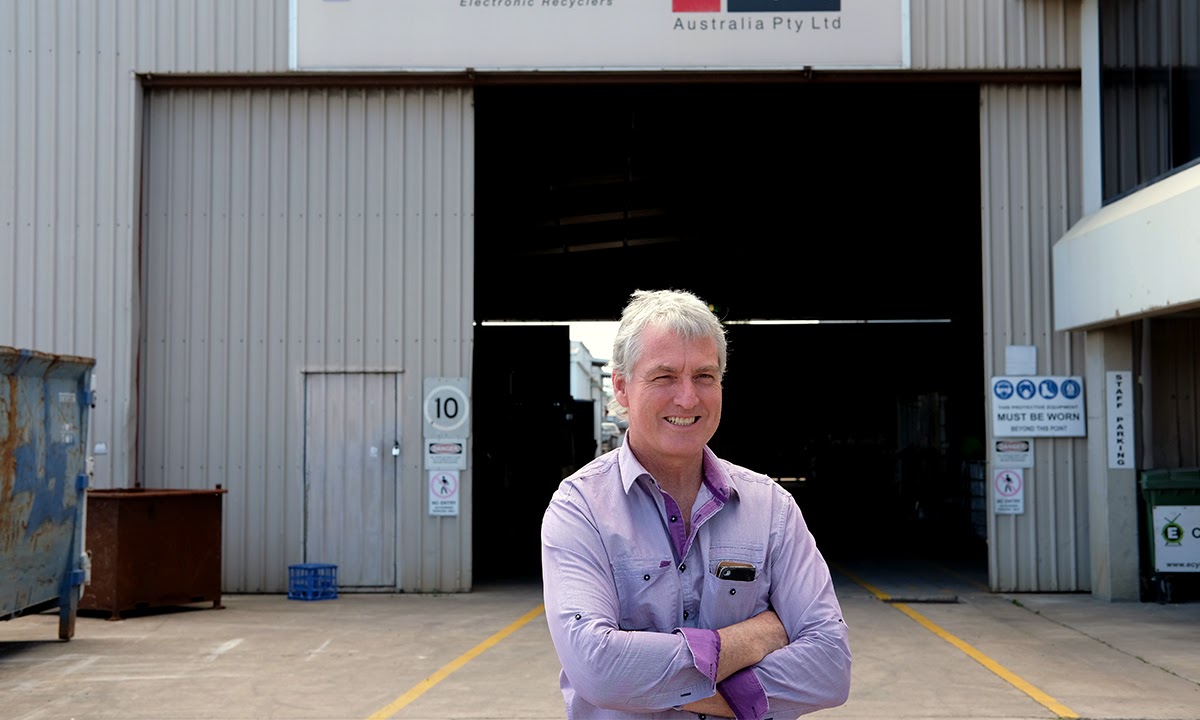
Waste management consultant and E-Cycle tour guide, Peter Schultz
Our next stop is E-Cycle SA, where we meet Peter Schultz, a waste management consultant who runs educational tours on behalf of the company.
Just before the entrance to the large shed where the electronic waste is being processed are two large wire crates containing a diverse array of computers and electronic equipment, dropped off at no charge by members of the public.
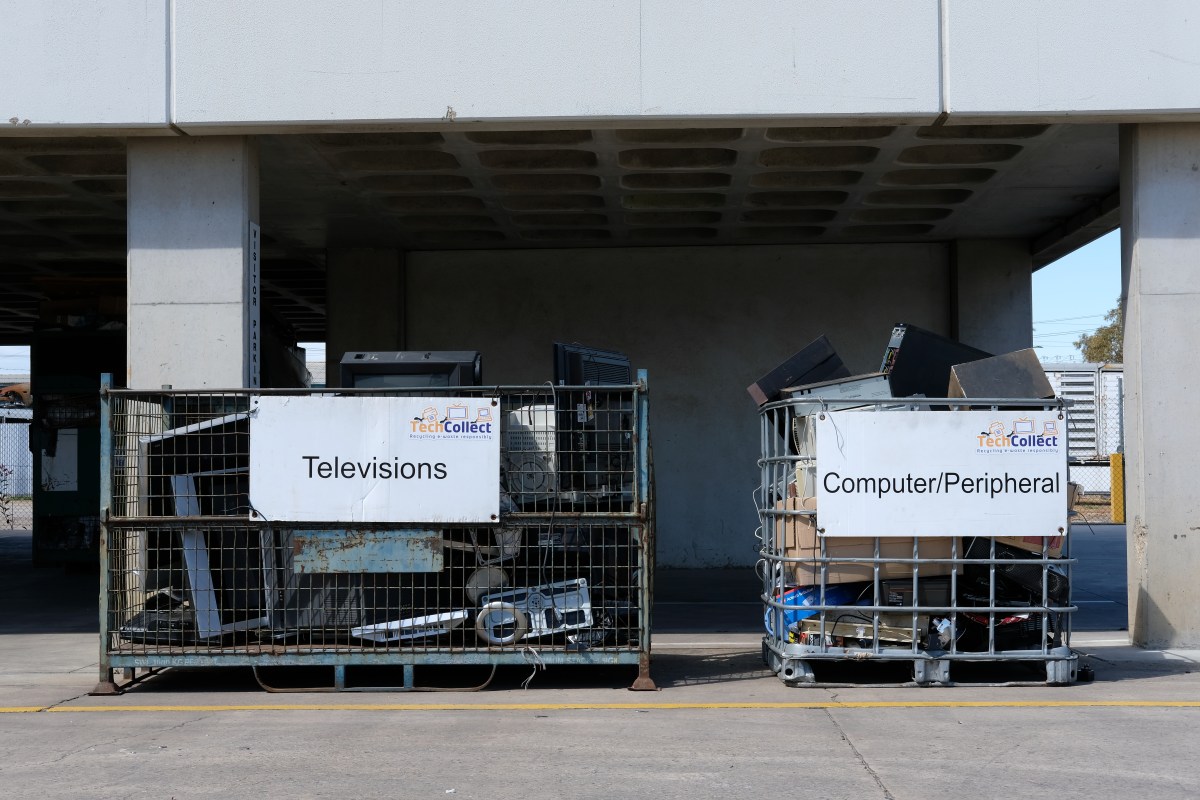
In the shed, several workers empty a container of disused televisions onto a conveyor belt where more workers will disassemble them, strip them of anything of value, and throw their bounty into large canvas bags.
“What we do here realistically is we dismantle everything in order to send it to facilities that can recycle,” Schultz says.
“This is from the City of Campbelltown, they had a hard waste collection. All of the e-cycle stuff is kept separate, and then it comes here, the guys are unloading it, and then they’ll strip it.
“There might be a chipboard around something electrical – obviously that’s not going to be able to be recycled, so a very small percentage becomes waste. However, they recycle to the max.
“We’re fully accredited here, so part of that is we make sure that the places we send stuff to are also recycling responsibly.”
E-Cycle takes a wide variety of material – anything that requires a battery or a power cord, except for freezers and refrigerators that need de-gassing – and in the education room upstairs, a small collection of what it receives is on display.
There are speakers, old hi-fi equipment and some extremely vintage Apple products.
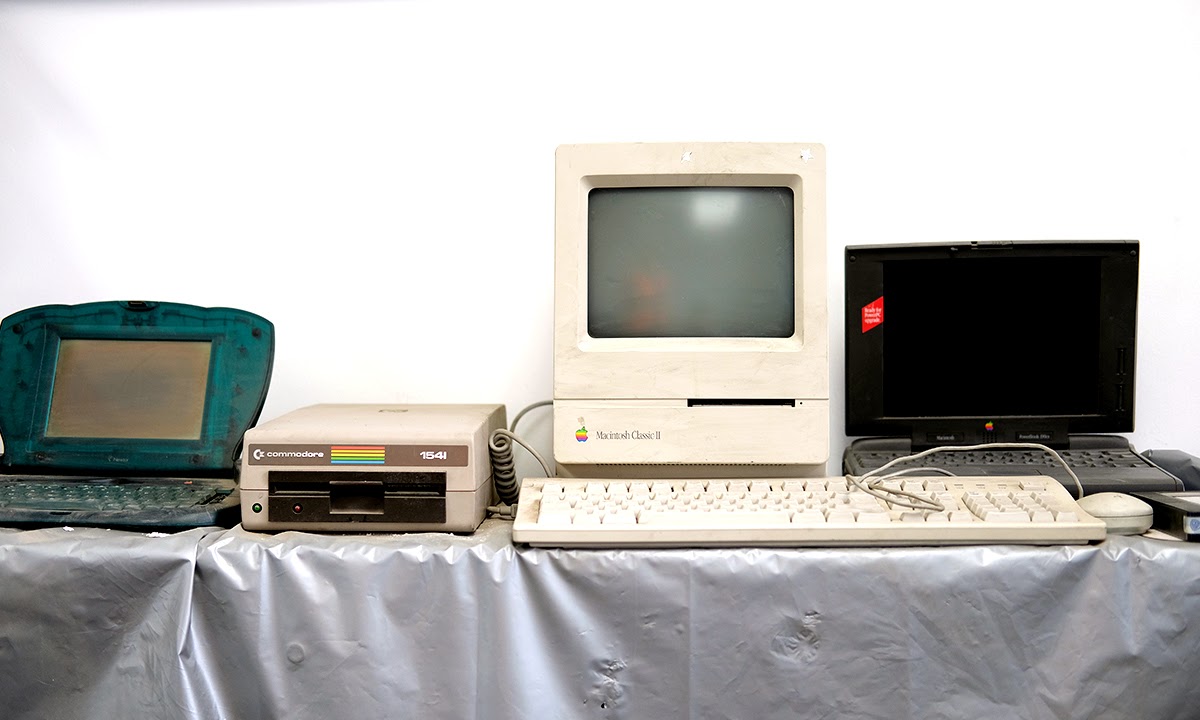
There is a planned obsolescence in most new technology, Schultz says, making the process of recycling electronics all the more important.
Although there is no dedicated kerbside e-waste bin, there are methods to responsibly throw out old technology.
People can drive to E-Cycle SA and drop their waste off in person; they can take it to another waste facility, where there is usually a stream dedicated to electronics; they can have it picked up as part of a hard rubbish collection; or they can look for e-waste bins placed around the city.
“Generally the difference between leaving it out on the road and bringing it here is once it’s here, you know for sure that any information on it is safe, because it’s completely stripped and dismantled, it’s not resold,” Schultz says.
Visy
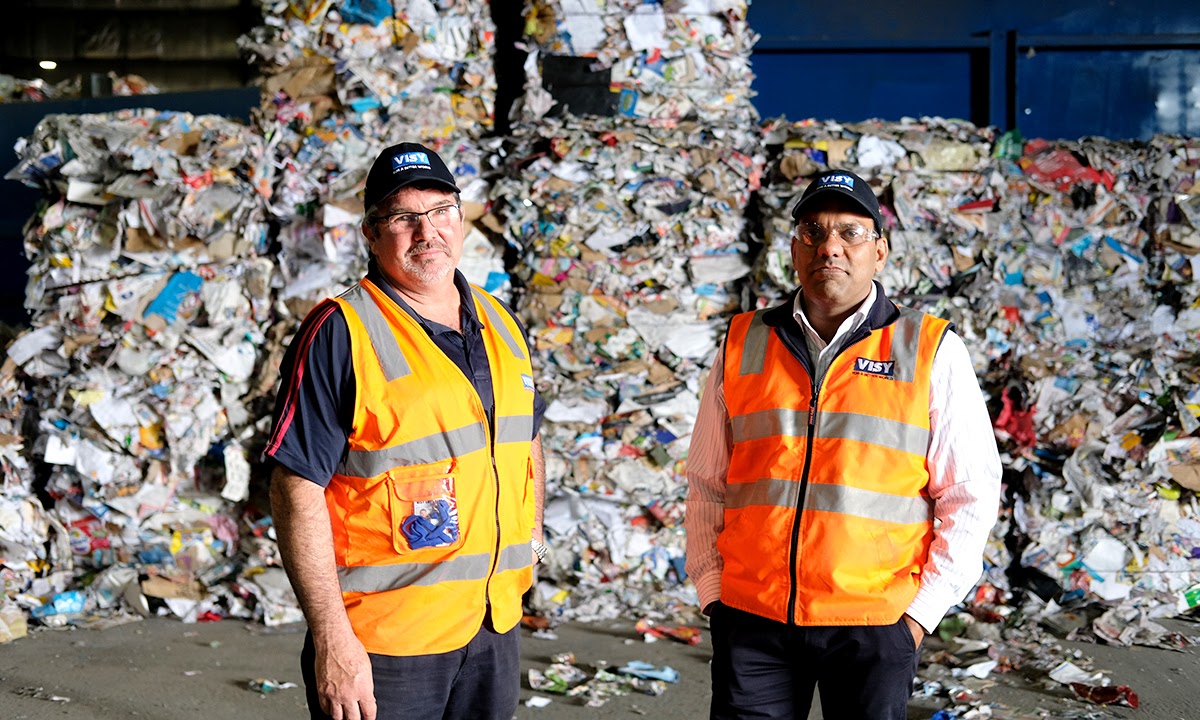
David Sherman, operations manager for South Australia and Western Australia, and Paresh Chawda, SQE officer.
The final stop on our waste tour is Visy, where we meet Paresh Chawda, SQE officer, and David Sherman, operations manager for South Australia and Western Australia.
We sit in a boardroom where Sherman explains Visy’s philosophy of being “true recyclers”.
“All of our product goes back into our business,” he says.
“Here we run about 24 tonne per hour, and our waste, when we sort through it, we’re left with roughly between 50 and 60 per cent of paper, and that directly goes to our Tumut mill.
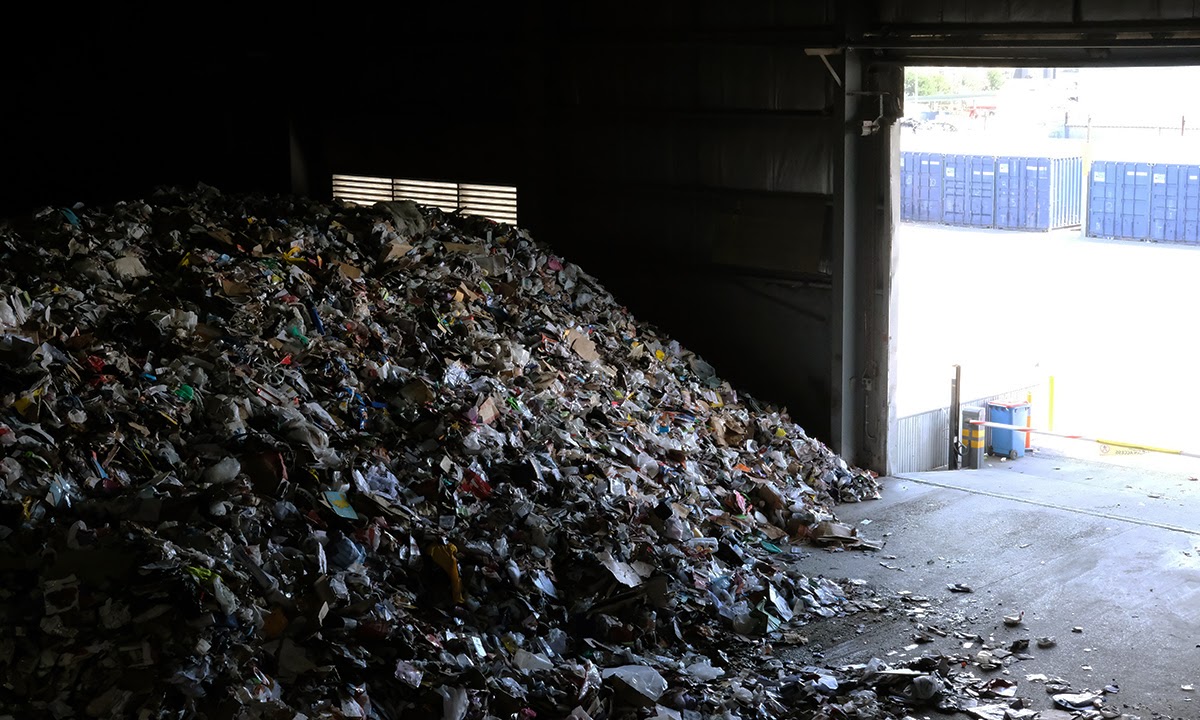
“Once it gets to Tumut – they get in a b-double every 90 seconds, either of wood chips or paper coming in from around the country, or paper going back out – those b-doubles will be refilled with paper reels, they’ll come straight back to our Gepps Cross plant here, and it gets made into boxes.
“Then that truck will drive five minutes down the road here empty and it gets filled up with paper. That supply chain cycle is continuous, five days a week, 52 weeks a year.”
Visy’s Materials Recovery Facility (MRF – pronounced ‘Murf’) is an impressive beast. Waste is fed onto conveyor belts that lead to large drums that spin constantly and sort the objects by size through holes in the outer rim of the drum.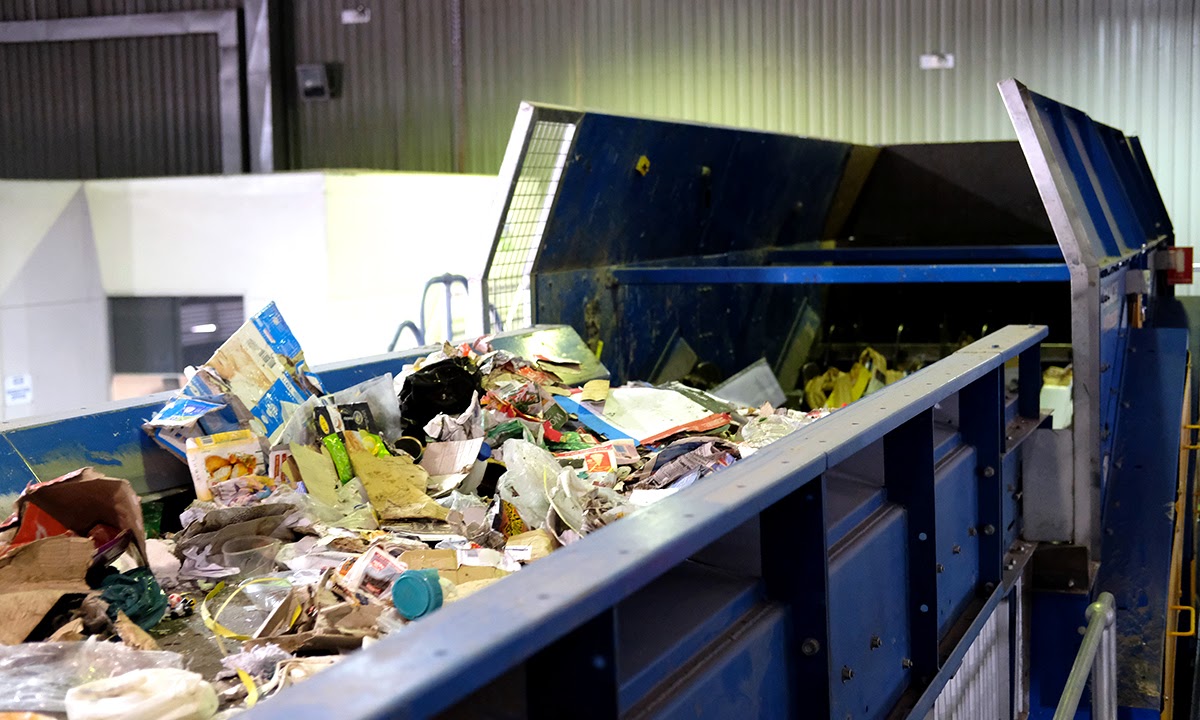
At several points along the line, workers pick and sort through what’s travelling along the conveyor belts to stop contaminants getting through. Rogue pieces of plastic or glass in the paper line might degrade the quality of the paper Visy will eventually create.
The end product is large bales of material that will be shipped off to Tumut.
“Anything we produce here is virtually gone within 24-48 hours. It’s straight out of here. Your problem once you start baling is that it can internally combust, and we’ll get things like cigarette lighters in there, and if you’re up in Queensland you get a lot of boat flares coming through,” Sherman explains.
“We roughly get 200 tonnes a day [and] 80 per cent of that product is out of here within 48 hours.”
Roughly four per cent of what is fed into the Visy plant comes out as waste. This is sent to landfill, which incurs a cost for the business.
“We’re the receiver of the product, yet we’re the one that gets penalised. It’s not in our contracts to pass it onto council or anything like that,” Sherman says.
“When the government puts on [the cost] for landfill per tonne, we don’t go back to our councils and go ‘we’ve now got this, I’ve received 100 tonne, you’ve now got to give me [money],’ we wear those costs.”
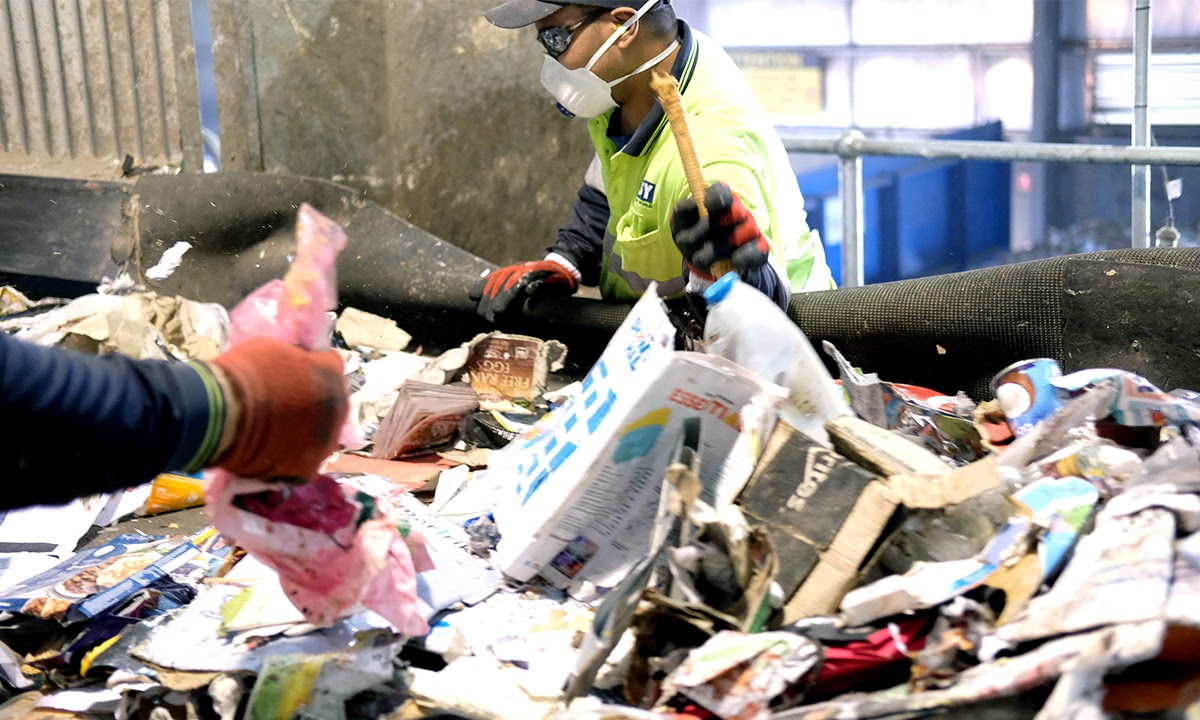
Visy will also receive products that are difficult for it to process – drinking straws and finely broken glass are two examples.
“Before a wine bottle used to travel all the way through here, and we’d probably get 80 per cent recovery,” Sherman says.
“Wineries have dropped the gram weight of their bottles – they transport a lot of wine overseas, so if you take out the weight, you get better profits. The glass that comes through my machinery just breaks, because there’s no strength in the bottles anymore.”
This is a lemon that Sherman is determined to turn into lemonade. The Visy facility has recently installed a machine that can turn the broken glass, straws and other pieces of plastic that aren’t easily processed by the MRF, into a sand-like substance that can be used as a base for asphalt and similar products.
“We won’t be selling that. We’ll be going to the asphalt company and say ‘I’ve got this product, can you use this product?’ and they’ll say ‘no, we get sand for $18 a tonne,’ and I’m going to say ‘I’ll give this as a substitute for nothing,’” Sherman says.
“We’ll spend $600,000, I think it works out about $15 a tonne to run it, to give it away to a bloke down the street so that it won’t go to landfill.”
This is a technological solution to a waste problem, but one that is also begging for a social fix. If individuals recycle more consciously, less of what comes to Visy will end up in landfill.
One trick Chawda shares is putting plastic bottle caps inside a plastic milk container so that the pickers can take them out and process them in a separate stream, rather than coming through the MRF with the other pieces of shrapnel now destined to become asphalt.
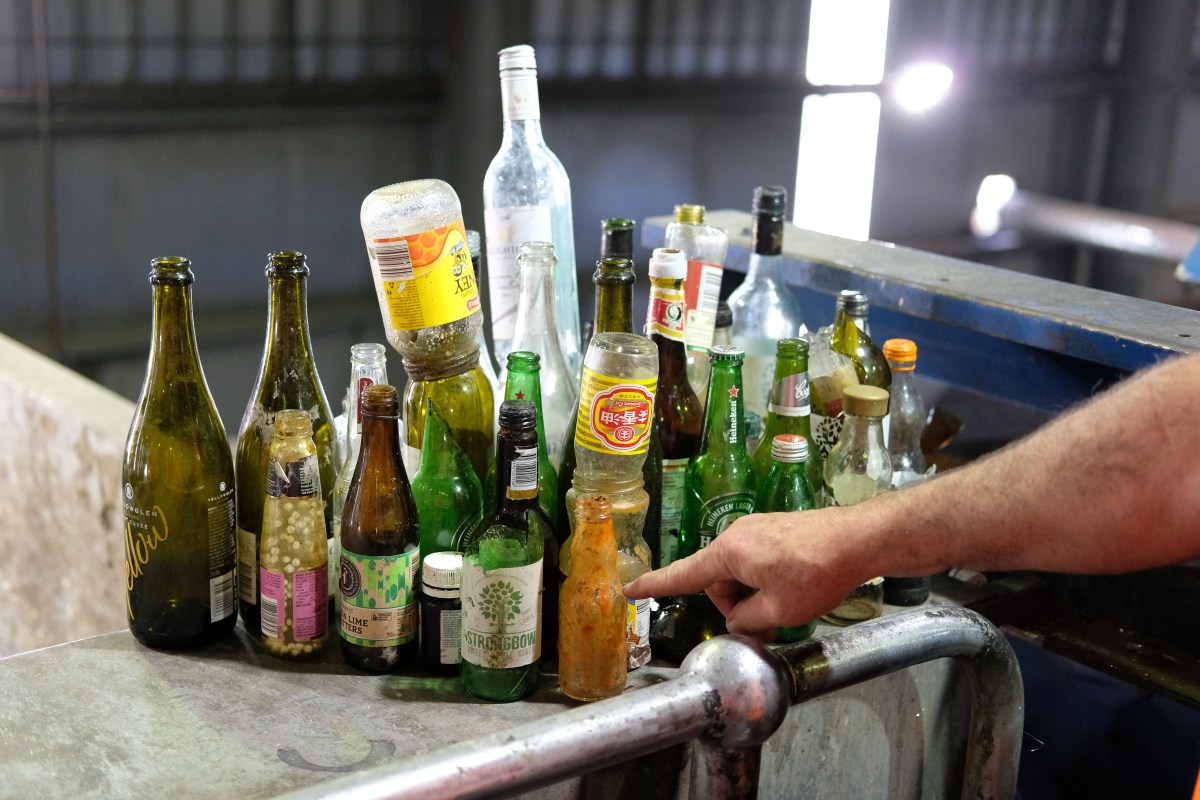
Rinsing out old tin cans and bottles before recycling them helps the process, so that they don’t need to be taken to a separate facility to be cleaned before organic growth sets in.
Both Sherman and Chawda agree that all it takes for these techniques to set in is education, and with the spotlight currently trained on the waste industry, it is the hope of everyone we spoke with during the tour, that the long-lasting effect will be a well-educated and responsible society.
Six ways to lift your recycling game
- Recycle or compost your food scraps
Most councils accept food waste in the green bin, if not – compost it in the garden. Many councils will subsidise the cost of a compost bin. Food waste tops the list of stuff you should be recycling, but probably aren’t. - Recycling doesn’t have to be squeaky clean
Cans, bottles, containers, anything made of metal, plastic or glass that has had food in it can be recycled, and it doesn’t have to sparkle like new. Make sure it’s empty and give it a quick rinse in the washing up water. - Recycling shouldn’t be dirty
See previous point – sure, it doesn’t have to sparkle, but if the sauce bottle is still half full or the can of dog food looks like there’s still another meal in it for Fido, then it needs a quick rinse. The water you use to rinse your recycling is far less than the amount of water and fossil fuels it takes to make and transport new packaging from scratch, so it’s worth it. - Fabric or clothes should NOT go in the yellow bin
Clothes, material, fabric, twine, yarn, wool and rope are not able to be recycled via your yellow bin. Not only that, these materials get tangled in equipment at recycling centres which causes damage and places workers at risk. - Recycle as much as possible
Don’t put recyclable metal, glass or plastic containers in your waste bin. (Unless it’s broken glass). Jars, tins, bottles and cans should all go in the yellow bin. Putting the wrong thing in the recycling bin is bad but putting recyclable materials in landfill is worse. - Ask if you’re not sure
Sometimes it’s not clear what to do with something you want to recycle. So rather than guess, visit recycleright.sa.gov.au or call 1300 137 118 and ask.
Solstice Media has partnered with the South Australian Government to provide information about the transition to a low-carbon economy. Read more stories like this here.




